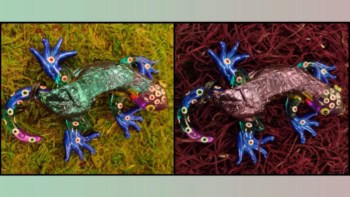Physicists from the US claim to be able to slow down the transmission of optical images using caesium vapour. By increasing the temperature of the vapour, they can delay the movement of a pulse of photons previously "imprinted" with an image from a stencil. The researchers also claim that optical buffers based on the concept could circumvent problems of information loss when light is converted to an electrical signal (Phys. Rev. Lett. 98 043902).

Delaying images – or image “buffering” – has potential in many applications from holography to quantum information. Currently, images can be either converted to electrical signals for processing or sent down a long, empty delay line. But analogue-to-digital conversion is prone to information loss, and delay lines often demand too much space.
At the University of Rochester in the US, however, physicists John Howell and colleagues have now shown it is possible to optically delay images, without loss of amplitude or phase information. First, they send pulses of light through a stencil so that the image is “imprinted” onto the photons. They then delay the pulses’ propagation by up to 10 nanoseconds by passing them through a gas that is highly dispersive – in this case, a chamber of hot caesium. Finally, they recover the image using an optical fibre that scans for the arrival of the pulses.
Amazingly, images remain intact using this method even when the light pulses are reduced, on average, to less than a photon each. This means that the wavefunction of a single photon, which has a state governed by the stencilled image, can be preserved.
While Howell and colleagues admit that light pulses have been delayed before, they say this is the first time that optical images, which contain an enormous amount of information, have been delayed.



